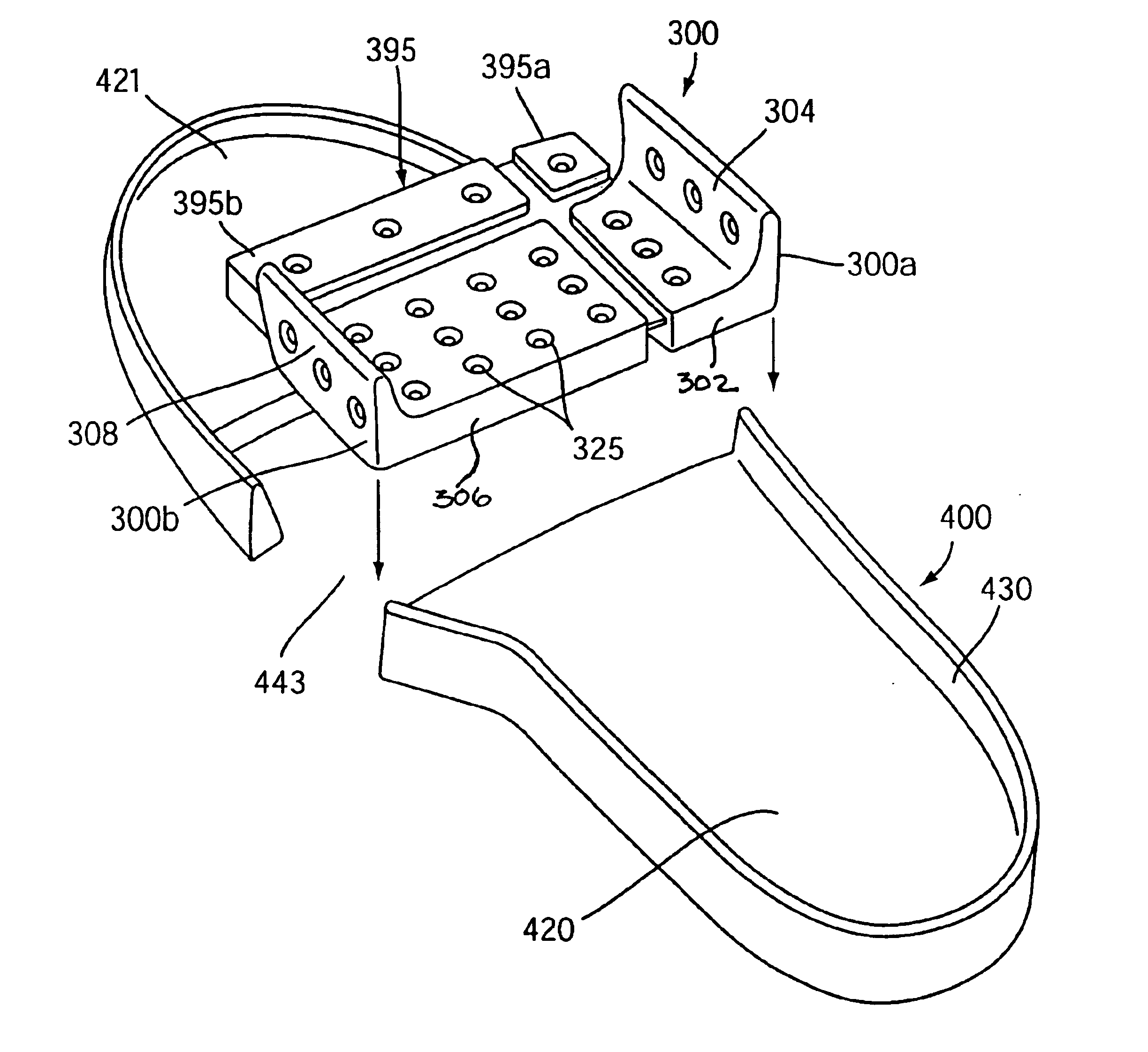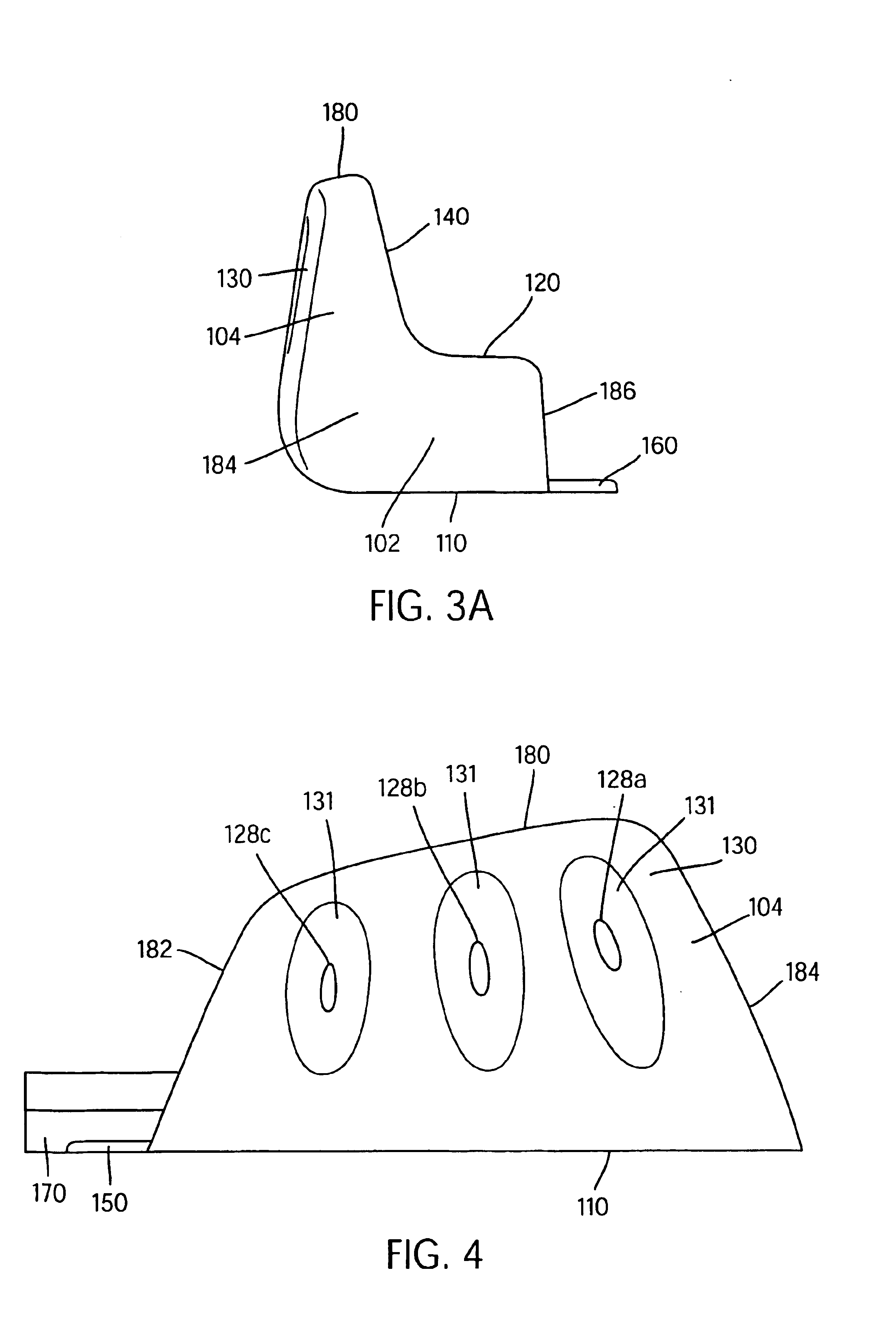Footwear with bladder type stabilizer
a technology of stabilizer and footwear, which is applied in the field of cushioning system of footwear, can solve the problems of deteriorating shoe materials, affecting the comfort of wear and tear, and affecting the comfort of wear and tear, and achieves the effects of increasing fluid pressure, dynamic stability, and rapidly shifting fluid
- Summary
- Abstract
- Description
- Claims
- Application Information
AI Technical Summary
Benefits of technology
Problems solved by technology
Method used
Image
Examples
Embodiment Construction
Broadly, the present invention provides a dynamic lateral stability device that moderates high lateral compressive loads and improves stability by helping to ensure that the bottom of a wearer's foot stays substantially in contact with the footbed. The device may comprise a resilient bladder insert having a horizontal sole portion and an upstanding or vertical foot portion which extends upward along a side of a shoe proximal a portion of the lateral or medial side edge of the foot. When a compressive load is applied to the horizontal sole portion, the horizontal sole portion compresses causing an increase in fluid pressure in the bladder insert because the overall volume of the bladder is decreased by the compression yet the volume of fluid remained constant. The increase in fluid pressure causes the vertical foot portion of the bladder to stiffen and in some embodiments to expand. The lateral stability device may also include one or more straps or a vamp that is substantially inela...
PUM
 Login to View More
Login to View More Abstract
Description
Claims
Application Information
 Login to View More
Login to View More - R&D
- Intellectual Property
- Life Sciences
- Materials
- Tech Scout
- Unparalleled Data Quality
- Higher Quality Content
- 60% Fewer Hallucinations
Browse by: Latest US Patents, China's latest patents, Technical Efficacy Thesaurus, Application Domain, Technology Topic, Popular Technical Reports.
© 2025 PatSnap. All rights reserved.Legal|Privacy policy|Modern Slavery Act Transparency Statement|Sitemap|About US| Contact US: help@patsnap.com



